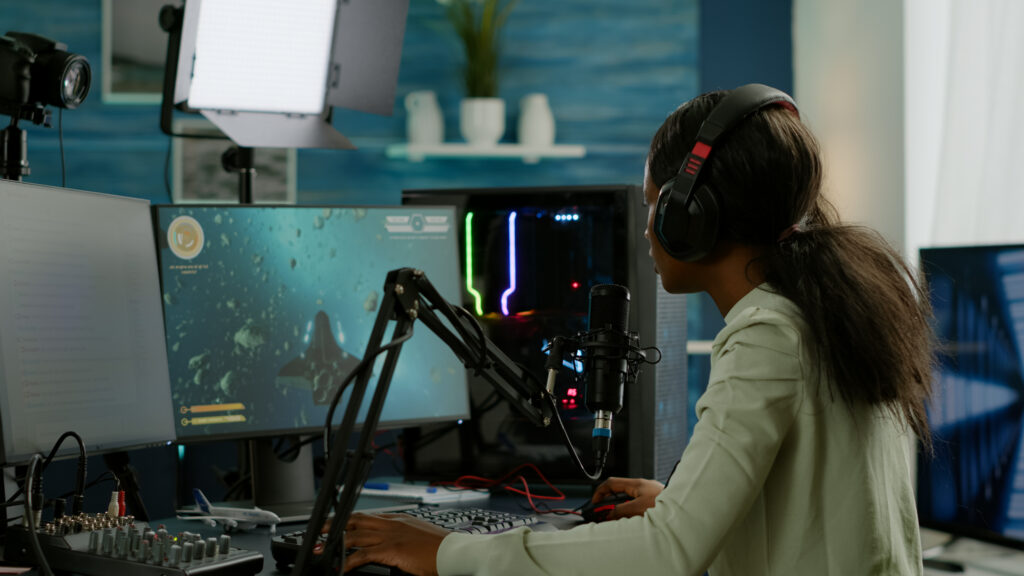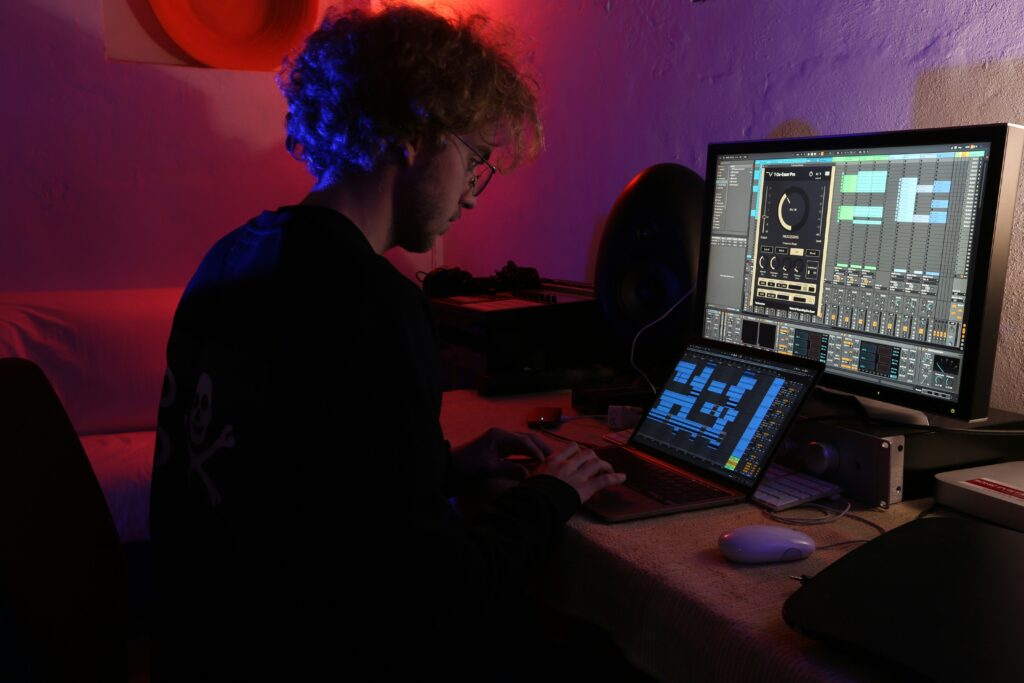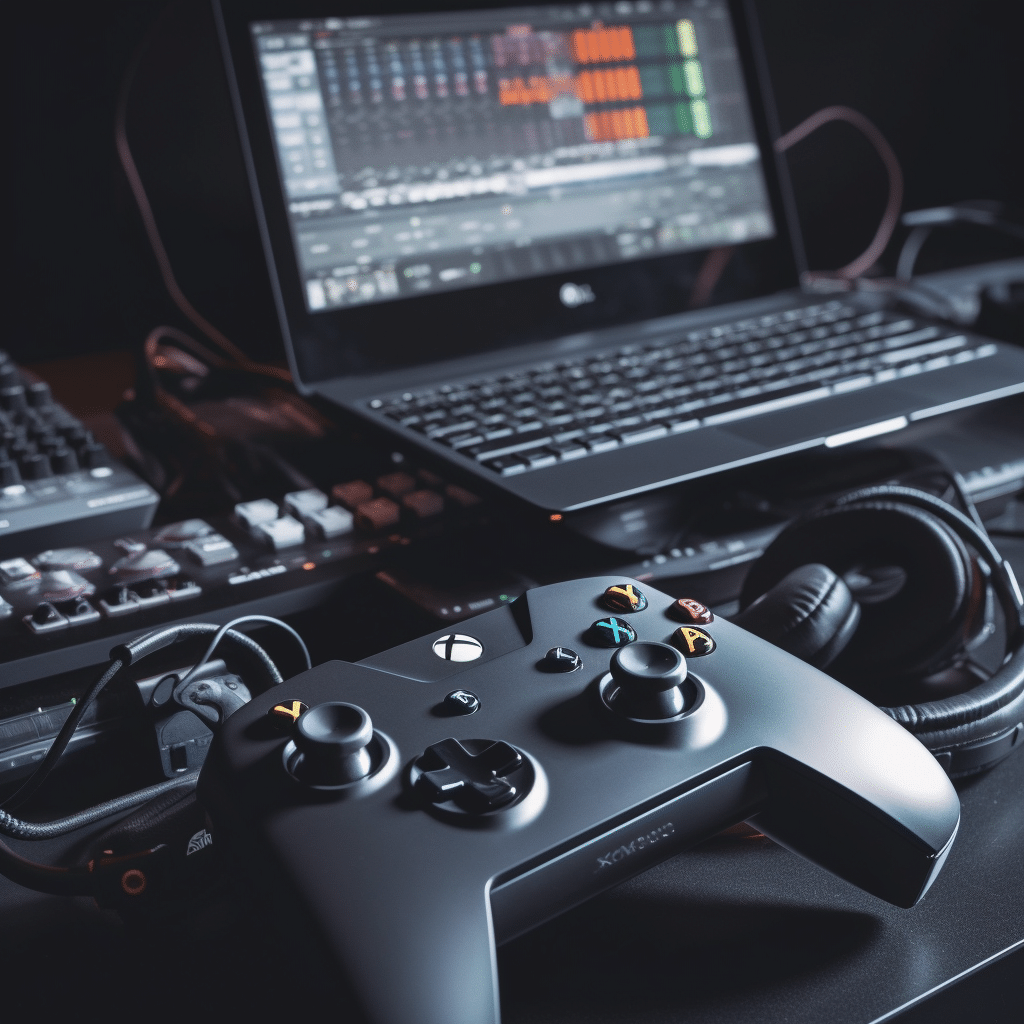Video game sound design is a crucial, yet often underappreciated element that significantly enhances an immersive gaming experience. The choice of techniques and technologies used in a video game sound design can make or break a project, consolidating it in history over time.
From the subtle rustle of leaves in a forest to the thunderous roar of a dragon, the intricate audio landscape crafted by sound designers breathes life into the virtual worlds we explore. Sound design can completely shape entire narratives and contribute to turning good games into memorable ones.
In this article, we want to delve into the world of video game sound design, examining its importance, techniques, and the impact it has on gameplay and player immersion!
Read also: 5 principles of game audio and sound design you should know
Video game sound design: the art, the science, and the importance
Sound design in video games is more than just background noise; it is a fundamental component that shapes the player’s experience. High-quality sound design can transform a good game into a great one by creating an atmosphere that complements the visual and narrative elements.

It enhances emotional engagement, provides critical gameplay cues, and aids in storytelling. For instance, the eerie silence and sudden, jarring sounds in a horror game like Silent Hill heighten the tension and fear, making the experience more gripping.
Sound design plays a crucial role in building a game’s world. Ambient sounds, such as the rustling of leaves, distant animal calls, or the hum of machinery, contribute to the immersion by making virtual environments feel alive and dynamic.
In open-world games, like The Witcher 3: Wild Hunt, the natural sounds of forests, towns, and seas create a believable and engaging world in which players can lose themselves for hours.
It can also be incorporated to significantly impact gameplay mechanics. Audio cues can provide players with essential information about their surroundings and potential threats.
In stealth games like Metal Gear Solid, the sound of an enemy’s footsteps or the rustle of a bush can alert players to nearby dangers, allowing them to plan their moves strategically. In competitive multiplayer games such as Call of Duty, players rely on directional audio to locate opponents and gain a tactical advantage.
Additionally, music and sound effects are instrumental in conveying the emotional tone of a game. In narrative-driven games, the musical score can underscore the game’s themes and the carefully crafted audio elements help to evoke deep emotional responses from players, making the storytelling more impactful.
Read also: The 10 greatest video game soundtracks of all time

6 techniques used in video game sound design
Creating compelling soundscapes involves a blend of creativity and technical expertise – sound designers employ various tools to achieve the desired auditory effects. It’s time to dive into those.
1. Field recording
Field recording is the process of capturing real-world sounds to use as raw material for video game sound design. This technique is essential for ensuring authenticity and can add a layer of realism to a project.
For example, recording the sound of footsteps in a forest ensures that every nuance, from the rustle of leaves to the crunch of twigs, is captured authentically.
Sound designers often use high-quality portable recording equipment to gather these sounds in various environments, which can then be edited and manipulated in the studio.
2. Foley artistry
Foley artistry involves creating sound effects in a controlled studio environment. This method is named after Jack Foley, a pioneer in the field, and includes recreating everyday sounds to enhance the audio experience.
Foley artists might simulate the crunch of snow underfoot using cornstarch or the clashing of swords using metal rods. This technique allows for precise control over the timing and quality of the sounds, ensuring they perfectly match the visuals they accompany.
3. Digital synthesis
Digital synthesis involves using software to generate sounds that cannot be easily recorded in the real world. This technique is invaluable for creating sounds for fantastical or futuristic elements, such as the hum of a spaceship, the roar of a dragon, or the ambiance of an alien planet.
Synthesizers and other digital audio tools allow sound designers to craft unique auditory experiences by manipulating waveforms, applying effects, and combining different sound elements.

4. Layering and mixing
Layering and mixing are critical techniques in sound design, involving the combination of multiple sound elements to create a rich and complex auditory experience.
For instance, a single gunshot sound might be composed of several different recordings, such as the initial blast, the echo, and the mechanical click of the gun’s mechanism.
By layering these sounds together and carefully mixing them, sound designers can achieve a more realistic and impactful effect. This process often involves adjusting the volume, panning, and equalization of each layer to ensure they blend seamlessly.
5. Interactive audio
Interactive audio is particularly important in video games and virtual reality, where sound needs to react dynamically to player actions. This type of sound design involves creating audio cues that change based on the player’s movements, decisions, and interactions with the game world.
For example, the sound of footsteps might change depending on the surface the player is walking on, and background music might shift in intensity during a tense moment. This technique enhances immersion and ensures that the audio experience is fluid and responsive to the player’s actions.
6. Additional tools
Aside from these specific elements, video game sound designers use a variety of techniques to treat sound to create the best design possible.
Ambisonics and surround sound play a pivotal role here – creating immersive environments using multichannel audio to place sounds in a 3D space. Most sounds also go through a dynamic range compression system to control the volume range of audio to ensure clarity and impact.
Adding spatial effects using reverb and echo to simulate different environments, such as a large hall or a small room, is another very common practice.
The use of middleware software is also a staple of most professional and complex projects. This type of software allows for more sophisticated audio implementation, particularly in interactive media.
FMOD and Wwise are amongst the best software available for that purpose in the market today.
Read also: How much to become an Android game developer in 2024?
The future of video game sound design

As technology continues to evolve, so does the potential for video game sound design. Advances in artificial intelligence and machine learning, for example, are opening new possibilities for procedural audio, where sounds are generated in real time based on the game environment and player interactions.
Virtual reality (VR) and augmented reality (AR) also present exciting challenges and opportunities, requiring even more precise and immersive soundscapes to match the 360-degree visual experience.
But the most important aspect is the growing recognition of the importance of sound design. This is leading to more specialized education and training programs, ensuring that future generations of sound designers are equipped with the skills needed to push the boundaries of what is possible.
We here at Main Leaf know firsthand the importance of video game sound design. It is an area where we always pay close attention to our projects – and we would be glad to share with you our 12 years of experience in the game development industry, which have shown us that this dedication pays off.
If you liked this article, you can always check out our blog, where we discuss many other topics relating to the world of video game technology and development. And if you want your game further optimized with beautiful sound design, make sure to contact us to make your dream virtual experience a reality sooner than you think!

